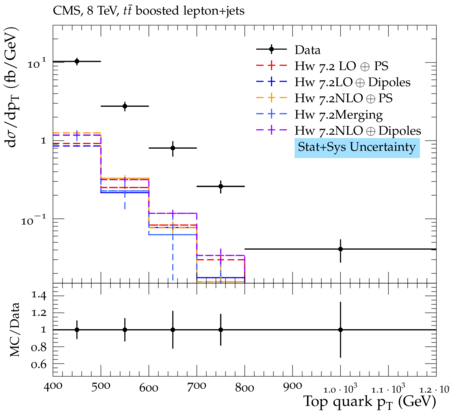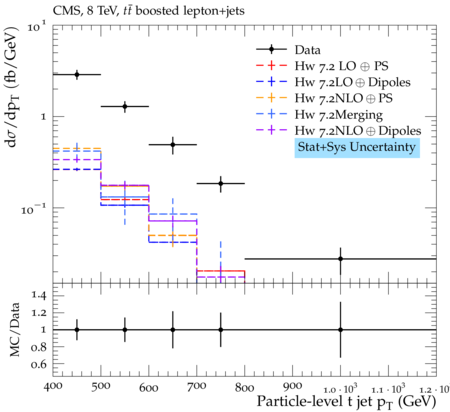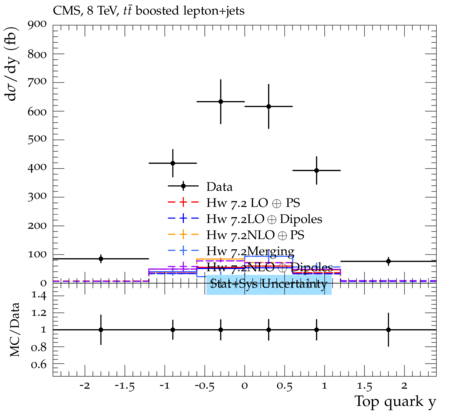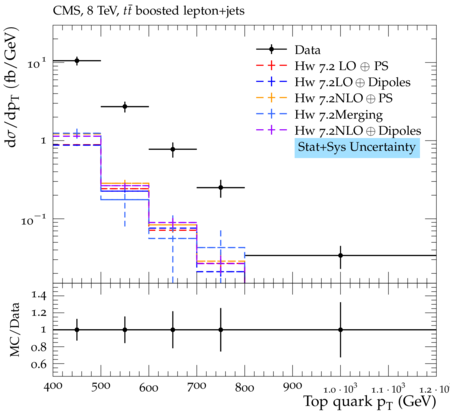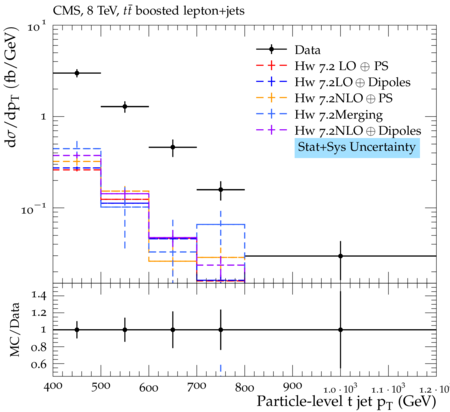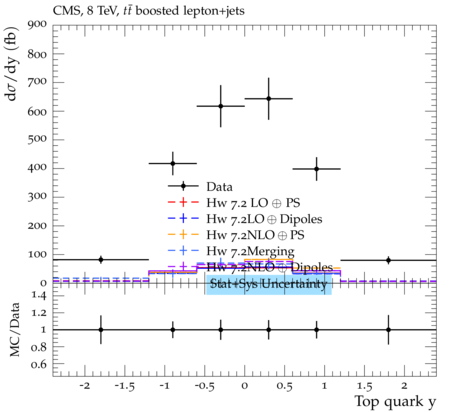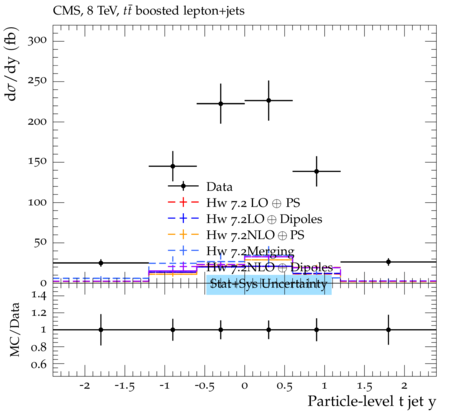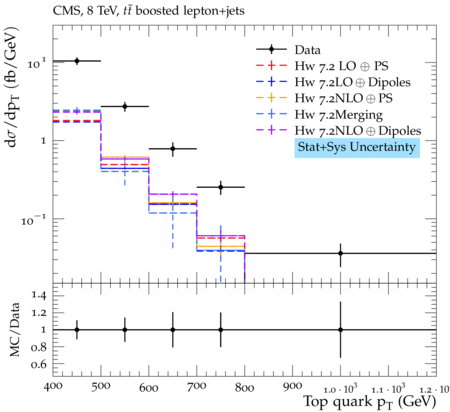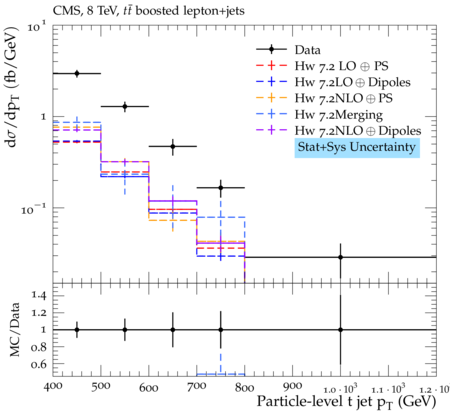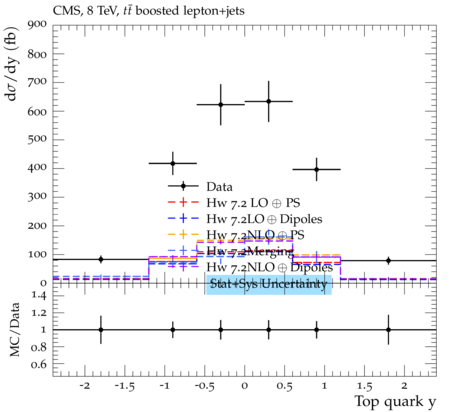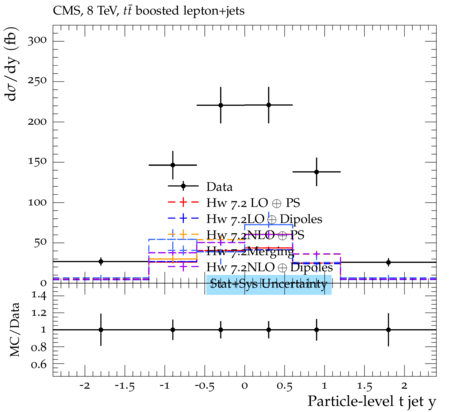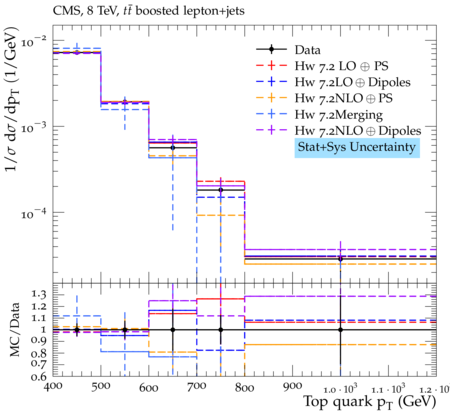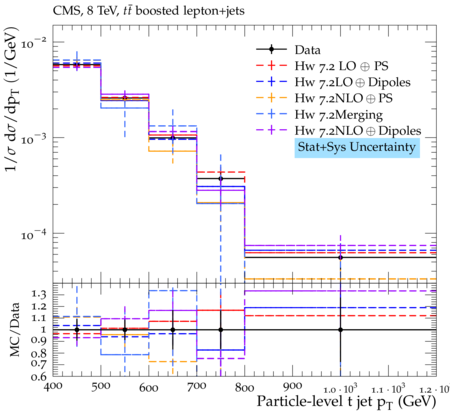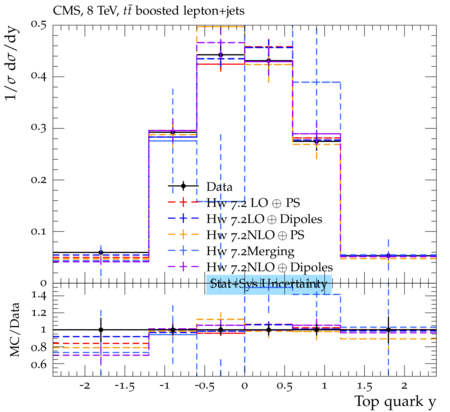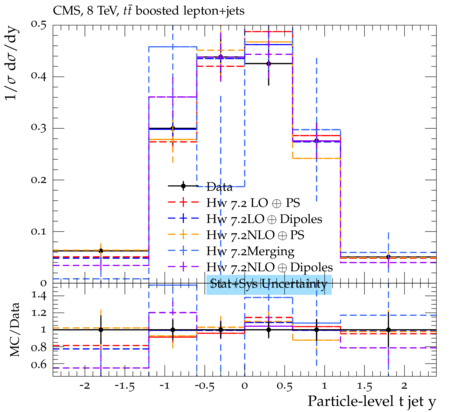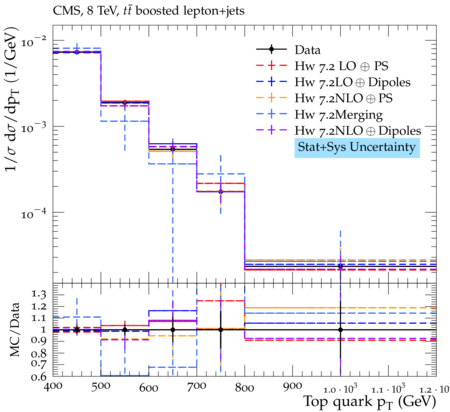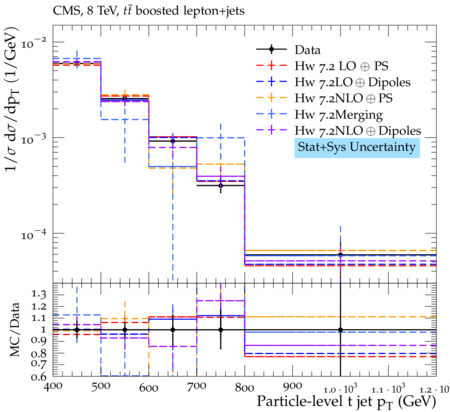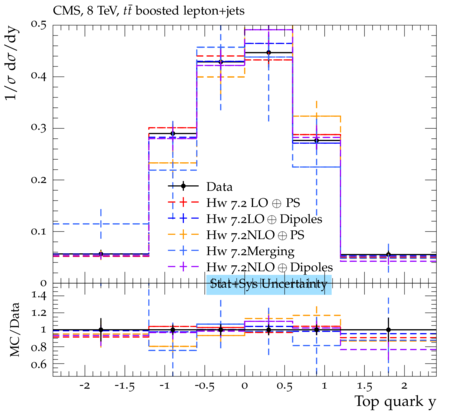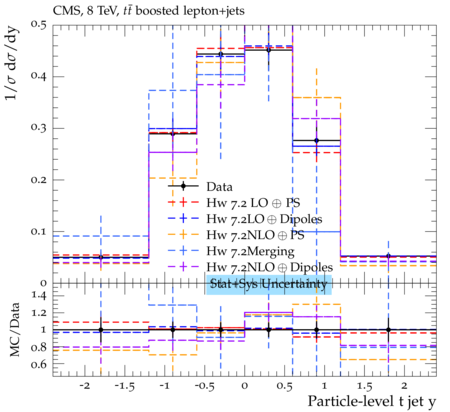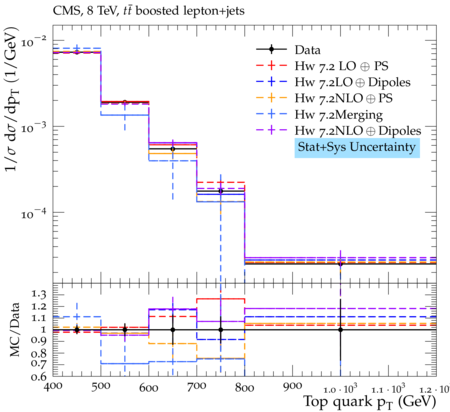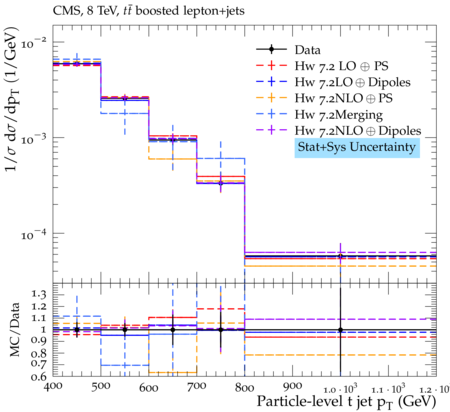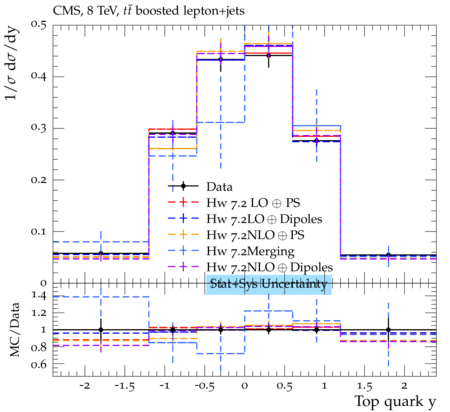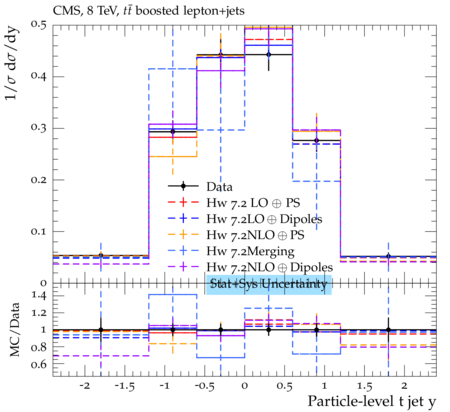CMS_2016_I1454211
The cross section for pair production of top quarks with high transverse momenta (pT>400 \text{GeV}) is measured in 19.7 fb−1 of pp collisions, collected with the CMS detector at √s=8TeV. The measurement is performed for lepton+jets events, where one top quark decays according to t→Wb→ℓνb, with ℓ denoting an electron or muon, and the second top quark decays to an hadronic final state and is reconstructed as a single large-radius jet and identified as a top quark candidate using jet substructure techniques. Integrated cross sections, as well as differential cross sections as a function of the top quark pT and rapidity, are measured both at particle level within a fiducial region resembling the detector-level selections and at parton level. RIVET: This analysis is to be run on tˉt Monte Carlo. It utilizes the PartonicTops projection, which assumes top quarks in the event record. The analysis has been validated with Powheg+Pythia6. The parton-level phase space is defined by requiring two PartonicTops. Exactly one PartonicTop must decay directly to a muon or electron (no intermediate tau), and exactly one PartonicTop decays hadronically. For tˉt Monte Carlo, this is equivalent to requiring the event to be semileptonic at parton level. The parton-level top quark is defined as the hadronically decaying top. The parton-level top quark is required to have pT>400GeV. The particle-level phase space is defined using the following object definitions: - Lepton: A dressed electron or muon, meaning the lepton has been clustered with all photons within a cone of R=0.1. The DressedLepton projection is used to construct the dressed lepton. The lepton is required to have pT>45 GeV and |η|<2.1. - B Jet Candidate: Gen AK5 jets are formed by clustering the final state particles in the event using the anti-kT algorithm with distance parameter R=0.5. Neutrinos are excluded from the clustering, as are any particles included in the dressed lepton. The gen AK5 jet is required to have pT>30 GeV and |η|<2.4. Gen AK5 jets in the same hemisphere as the lepton (ΔR(e/μ,jet)<π/2) are defined as b-jet candidates. - Top Jet Candidate: Gen CA8 jets are formed by clustering the final state particles in the event using the Cambridge-Aachen algorithm with distance parameter R=0.8. Neutrinos are excluded from the clustering, as are any particles included in the dressed lepton. The gen CA8 jet is required to have pT>30 GeV and |η|<2.4. Gen CA8 jets which have pT>400 GeV, 140 GeV < mass < 250 GeV, and are in the opposite hemisphere from the lepton (ΔR(e/μ,jet)>π/2) are defined as top jet candidates. The particle-level phase space is defined by requiring ≥1 b jet candidate, ≥1 top jet candidate, and exactly one lepton. This is in addition to the parton-level semileptonic requirement. The highest-pT top jet candidate is defined as the particle-level t jet.
Generated at Thursday, 12. December 2019 02:35PM
